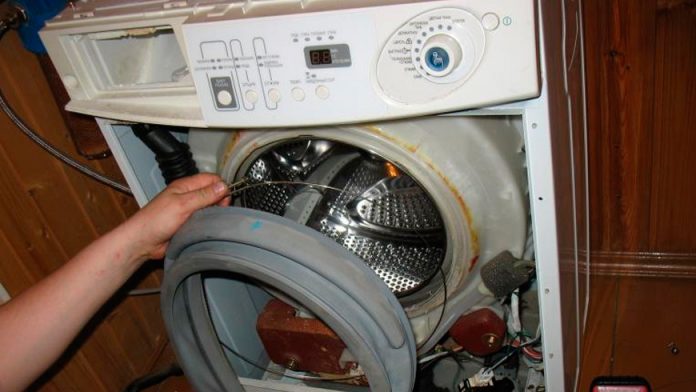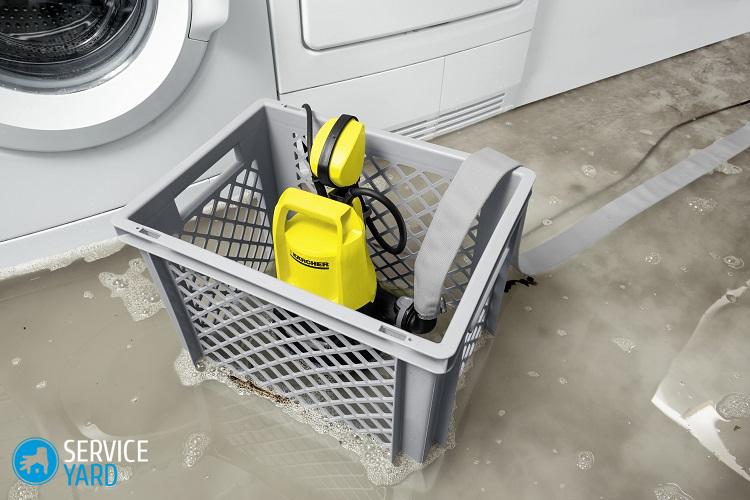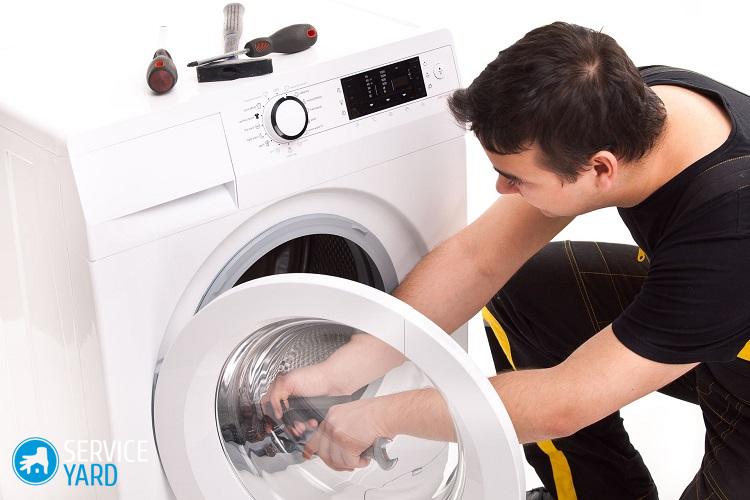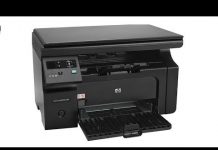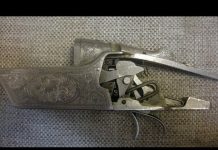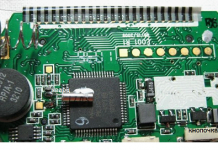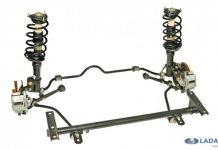You can repair many breakdowns in washing machines with your own hands. Most often, instructions can be found on the Internet, where they are detailed and with video. Even housewives can handle most of the repairs. So if the breakdowns are not very difficult, go for it!
A common complaint from owners of Bosch washing machines is the assertion that the laundry is poorly rinsed out. What can I say here? A feature of many models of this brand is effective washing with low water consumption. Washing, not rinsing. It's just that, unlike other machines, the laundry does not "float" in large amounts of water. Water may not even be visible in the drum during the wash cycle. This is often a psychological factor. If the water in the tap is too soft and the laundry is not rinsed out, there are two ways - to reduce the amount of detergent or to turn on the additional rinse function before starting the washing machine. You can turn on the second spin rinse after the end of the main cycle.
Weak spin. The Bosch brand has a lot of modifications equipped with a system for suppressing imbalances during spinning. Its feature is a decrease in speed or a complete shutdown of the spin when a problem occurs. This is not a breakdown, but protection. You just need to manually distribute the laundry in the drum and the problem disappears.
Malfunctions of Bosch washing machines, which are available for self-repair.
Most modern Bosch machines are capable of eliminating guesswork - what's wrong? On the screen of their display, the type of malfunction is diagnosed using a specific code.
If everything is the same, check the pump. All Bosch machines are equipped with float trays to prevent leaks. Therefore, it will not be possible to get through the bottom to the drain pump. But these washing machines provide for the removal of the front wall. Not the most difficult procedure. Before you start working with the case mountings, it is important to know that at Bosch all screws have a sprocket configuration of a certain size. We'll have to prepare and stock up on the right tool. Now let's get started. What to do?
Remove the powder drawer and fabric softener. Inside it there is a special key for this. Then unscrew 3 screws and remove the control panel.
We do not touch the wires. Next, remove the hatch cuff. Pull back and remove the spring clamp and remove the cuff from the body. We squeeze the latches of the hatch locking device. If there are screws, unscrew them and push the lock inward. We find the rest of the attachment points of the front wall. Depending on the modification, they can be under the lower decorative panel or at the bottom of the case. We unscrew the fastening screws and remove the front wall. Access to the inside of the Bosch washing machine is open.
Now we can remove the drain pump for replacement or repair. It is possible to remove the pump with filter and pipe.The filter is usually secured with an external self-tapping screw, and the branch pipe is held by clamps. The pump is mounted on three screws, which will need to be unscrewed and disconnected from the wires. We check the entire system for blockages. If the pump has become unusable, we replace it with a new one and install the entire drainage system in its original place. After that, the body of the Bosch washing machine is assembled back. The performance of the machine is checked.
The first thing to do is to check for the presence of water in the water supply. Then the condition of the inlet hose - are there any kinks or kinks. Some Bosch machines (which have the 4th digit in model 4) are equipped with the AquaStop system. If this protection is triggered, a corresponding message will appear on the display screen. We check the condition of the filter mesh at the water inlet. We carry out cleaning if necessary.
If the previous methods did not help, most likely you will need to replace the water level sensor (or another name for the pressure switch).
Replacing the pressure switch on your own will not be difficult. To carry out this operation, you will need to remove the top cover of the machine. Unscrew the two screws and pull back. In the opened space on the right of the case is the same round sensor. It rests on a latch that must be squeezed out. The hose is disconnected from below and the wires are disconnected. You need to remember or write down how they are installed. We take a new one and put it in the reverse order.
To remove the non-working heater, you will need to remove the back cover of your Bosch washing machine. The tank of the car will be visible inside. Below on the tank you can easily find the outer part of the heating element, to which the wires are connected. To remove the heater, you need to unscrew the bolt on which it is attached and disconnect the contacts. The wires are marked accordingly. It is necessary to remember their location on the heater. The heating element is removed, and a new one is installed in its place. Everything returns to its place. The problem has been resolved.
These symptoms can be caused by wear on the drum bearings or a foreign object getting between the tub and the drum of the washing machine. The problem is already much more serious, but not at all insoluble. You will have to practically completely disassemble the washing machine. The laboriousness of the process of replacing the bearings of a Bosch washing machine is more than compensated by the fact that you do not have to pay a lot of money that service specialists will ask for the same process.
You can try to remove a foreign object from the tank with something like a hook, but if it does not work out, all the same actions are used as for changing the bearing.
Before disassembling the machine to the ground, it is worth checking if the noise is caused by a problem with the shock absorbers or a loose balance weight mount. There are actually two cargoes. One under the top cover and easily accessible. The second one is under the front panel of the washing machine. You have to take it off. We have already discussed how this is done earlier. If necessary, tighten the fasteners. The condition of the shock absorbers is also easy to check with the body panel removed.
The process for replacing bearings for Bosch washing machines is not very different from the same procedure for machines from other manufacturers. The disassembly process may differ in that the tank is removed using the removed front panel. Dismantling the tank itself compares favorably (in terms of convenience) from Aristons and Indesites in that they are collapsible and do not need to be cut. The re-assembly is about the same though. Original bearings are unlikely to be realistically purchased, but it is quite easy to pick up using old ones as a sample.
VIDEO
Washing machines from the German company Bosch have always been of high quality. Bosch products are made only of high quality materials, are ergonomic and easy to use. However, sometimes situations arise when equipment fails for one reason or another.In such cases, you can do a simple repair of the Bosch washing machine with your own hands, and in case of a serious malfunction, contact a service center.
Before repairing a Bosch washing machine, it is necessary to carry out diagnostics and establish the cause of the malfunction. For this purpose, test diagnostics are provided, performed in a specific sequence. When diagnosing a malfunction in a Bosch washing machine, the door must be closed. After that, all programs are set to the off position, and there is a pause for a few seconds.
Next, the spin mode is selected, after which the start indicator will start blinking. The spin speed change button is then pressed while the program selector is set to the drain position.
As a result, the display will display the following codes:
F16 - corresponds to a loosely closed door.
F17 and F18 - indicate problems when collecting and draining water.
F19 - means a malfunction of the heater - heating element.
F20 - possible malfunctions of the relay and the NTC temperature sensor.
F21 - the motor drive is faulty.
F23 - water leak.
F40 - input voltage is abnormal.
F63 - malfunctions in the control module.
Sometimes test diagnostics cannot be started, which most likely means not problems with components and parts, but malfunctions of the control board.
To check and confirm the malfunction of a particular code, the last displayed error must be erased from the memory of the washing machine. For this purpose, the program selector is set to a specific position.
Drive motor check - 3,
Pump check - 4,
Heating element - 5,
Valve for filling hot or cold water - 6 and 7,
Water inlet valve for the main wash - 8,
Pre-wash water inlet valve - 9,
FCW automatic testing - 12,
Rapid Automated Testing - 14.
The motor diagnostics in different Bosch washing machine models can be started in positions 3 or 4.
At the end of the diagnosis, when the malfunction is accurately established, you can purchase parts and spare parts, and then start repairing the washing machine.
The lack of water heating manifests itself primarily in a noticeable deterioration in the quality of washing. In some cases, washing may stop altogether. It is not difficult to make sure of this, it is enough to put your hand on the glass of the loading door. In normal mode, heated glass is felt, and when the temperature is violated, it is not felt at all. For all models of washing machines, you can check the drain hose and find out if the water heats up in the washing machine.
Most often, the cause of the malfunction is the failure of the heating element - the heating element. In this case, its replacement is required. The main enemy of all heating elements is considered to be low-quality water, which contains impurities and is considered hard. Often the sensor responsible for maintaining the temperature regime breaks down, and then the wash program is automatically blocked.
You can carry out the replacement work yourself. However, one should take into account the need to completely open the case of the washing machine, which not everyone can do. Therefore, if you are not completely confident in your capabilities, it is recommended to call the service center specialists.
Sometimes it can happen that the drum does not spin at all, although the water pump continues to work normally. The reason may be a drive belt torn or flying off the pulley, worn out lamellas and brushes of the electric motor, as well as the failure of the motor itself and the tacho sensor. In addition, foreign objects often get into the drum, jamming and stopping rotation.
The main cause is considered to be engine malfunctions. Before checking it, the drive belt is removed from the pulley and the wires are disconnected.On the removed engine, the rotation of the shaft is checked, the brushes are pulled out and checked. If worn, they must be replaced. If the brushes are normal, check the tachometer installed on the motor housing. This procedure is performed using a multimeter. After that, the condition of the lamellas or collector plates is checked, for which the engine housing is disassembled. At the same time, the winding itself is checked.
After checking the engine has shown the norm, you should pay attention to the drive belt. Problems can be detected if the drum is turned too lightly. In this case, the belt is either torn or severely stretched. In both cases, replacement is required, for which the back of the case is removed. The belt itself is easy to remove and replace with a new one. First, it is put on the engine pulley, and then on the drum pulley, which must be turned by hand.
The next reason is often foreign objects falling into the gap between the drum and the tank. To remove, you can use the hole for installing the heating element. For this purpose, the heating element must be unscrewed and pulled out of the hole. Then you need to highlight with a flashlight and look inside. If you find a foreign object, you need to get it out. After removal, all parts are reassembled in reverse order. If this method did not help and the item could not be removed, the Bosch washing machine will have to be disassembled completely in order to remove the tank and remove the drum from it.
Before doing repairs, you should check the presence of water in the water supply system. You also need to check the condition of the water supply valve so that it is in the open position. The water supply hose could be kinked or kinked inadvertently.
With a normal water supply, you need to look for another cause of the malfunction. First of all, you need to check the intake valve for blockages. A safety filter upstream of the inlet valve may be clogged with debris. In many cases, it is enough to just clean it, and everything will return to normal, otherwise you will have to look for more serious malfunctions.
One of them is the failure of the electronic water supply valve. In this case, the collection of water stops until the defective element is replaced. Water may not enter the machine due to a malfunction in the control module. As a result, the command to collect water is not received until the control module is reflash or replaced.
The next reason may be the failure of the pressure switch - a water level sensor that measures and controls the amount of liquid required for washing. If a breakdown occurs, the washing machine cannot quantify and washing will not start until the sensor is replaced. Sometimes water does not flow due to the failure of the hatch locking device. A defective device requires a complete replacement.
With this malfunction, the water drainage mode is noticeably violated. Draining is slow or stops altogether. Water is not drained out during all wash phases. After removing water from the tank, the spin mode can be blocked. The most common causes are a clogged pump filter and a branch pipe connecting the tank and the pump, as well as foreign objects that have got inside and jammed the pump impeller. The drain hose, siphon and sewer pipe may be clogged.
The Bosch washing machine must be disconnected from the power supply before checking and repairing. First, the filter located below the loading hatch is unscrewed. When clogged, it is cleaned and installed in its place. After that, you need to check and clean the drain pipe. To get to it, you need to disconnect the drain unit from the body. The corrugation itself is carefully felt and, if debris is present, it is cleaned. Assembly is carried out in reverse order.
If the impeller located immediately behind the filter is jammed, inspect it and remove any foreign objects that interfere with operation.The pump is checked last. When the impeller is clear of debris, but still does not rotate, this means that the pump is malfunctioning and needs to be replaced.
Sometimes, after washing, the laundry is wet or not wrung out enough. This indicates a malfunction in the spin system. The main reason, as always, is the blockage of the drain pipes, drain hose, pump filter, siphon and sewage system. This problem is solved by the usual cleaning and flushing of the clogged parts.
More serious malfunctions are considered breaks in the heating element, a malfunction of the water level switch, or a tachometer that regulates the drum speed. In all cases, replacement of defective parts is required. Mechanical reasons include the uneven distribution of the laundry in the machine. As a result, there is no smooth set of revolutions by the drum and the electronic sensor automatically cancels spinning.
Electrical problems may occur. They consist in the wear of the brushes or the malfunction of the motor itself. The most serious breakdown is considered to be a malfunction of the control module, which is either repaired or completely changed.
Sometimes your Bosch washing machine simply won't start when you press the power button. In this case, several indicators start blinking on the panel at once or they do not turn on at all.
The reasons for this condition may be as follows:
Loosely closed hatch.
Lack of power supply in the network, outlet malfunction, power surges and surges.
Defective cord or plug. It is recommended to carefully examine them for damage, burning and other defects. If faults are found, the damaged cord or plug must be replaced.
Lack of water supply to the washing machine.
If all of the above malfunctions are absent, then the cause of the malfunction is more complex, requiring more qualified diagnostics. It can be connected to a control panel or an internal electrical circuit. Most often, the programmer or electronic module does not work, as well as the noise filter and the sunroof lock device. If the reasons could not be determined on your own, you should call a qualified specialist.
Sometimes during operation, the Bosch machine begins to emit extraneous sounds. The presence of a squeak indicates friction between parts. Therefore, to determine the malfunction, it is likely that the washing machine will need to be disassembled in order to perform an inspection and diagnosis.
Worn springs used to suspend the tank are one of the main reasons. Both springs are replaced at once, since replacing only one of them will lead to uneven loading.
Another reason is related to the wear of the shock absorbers that absorb vibration. Worn parts become stretched and emit a specific squeak during machine operation. The drive belt can also be worn and become stretched and weak. This causes it to slip and squeak. Sometimes the drum is unbalanced due to a loose shaft attachment. Worn parts must be replaced, and all loose components are tightened to normal with a tool.
VIDEO
Technique always breaks down at the wrong time. If you have a question on how to disassemble a Bosch washing machine in order to check and repair it, use our tips. You will be able to independently inspect all parts and diagnose breakdowns, as well as replace defective elements. In the article you will find step-by-step instructions with photos and videos.
Before disassembling a Bosch washing machine, you need to properly prepare for this. You must present the CM diagram and the elements that will have to be removed.
The disassembly scheme is identical for different models of cars: Bosch Max 4 (Bosch Maxx 4), Bosch Max 5 (Bosch Maxx 5), Bosch Max 6 (Bosch Maxx 6).
What stages of disassembly you have to go through:
Remove covers: top, back and front.
Pull out the detergent drawer.
Remove the control panel.
Dismantle the motor, intake valve, pressure sensor.
Disconnect connectors and wiring.
Disconnect connections and hoses.
Unscrew the weights and supports.
Remove the cuff clamp, take out the UBL.
Take out and disassemble the tank.
What tools do you need:
Screwdrivers: slotted, Phillips, hex.
Hammer, chisel.
Torx keys.
Nippers.
Pliers.
You need enough space to disassemble your Bosch washing machine.
Disconnect the washing machine from the mains, turn off the water supply. Then prepare the container, unscrew the inlet hose from the CMA body and drain the remaining water into it. Walk around the car, open the hatch on the bottom of the front panel. Unscrew the filter and drain the water.
The preparatory stage is over, it remains only to move the washing machine so that it is convenient to move around.
So, you have prepared everything you need, get to work.
Take a Phillips or Hex screwdriver and remove the two screws from the back of the machine. Now slide the cover forward and lift it up. Be careful, the edges of the panel may be sharp. Set her aside.
Moving to the front, pull out the powder dispensing tray. Pressing the latch in the center, pull it towards you and remove it from the case.
Next, unscrew the bolts located behind the tray, as well as the bolts on the other side of the panel. Gently release the plastic clips (you can pry it off with a flat screwdriver), detach the panel. To completely remove it, you will need to disconnect the wire connectors - it is better to photograph them in advance. But it's easier to hang the panel from the side, on the service hook.
Remove the bottom cover. It is located at the bottom of the front panel. To do this, it is enough to open the latches. Set it aside.
First of all, open the hatch door. Before disassembling the door of the Bosch washing machine, remove it from its hinges by unscrewing the fastening screws. This must be done so as not to damage the glass of the sunroof.
Bend the hatch cuff and, prying the clamp with a screwdriver, pull it out of place. Insert the sealing rubber into the drum.
Remove the bolts securing the door lock. Place your hand behind the body and take out the UBL. Disconnect all wires from it and set the lock aside.
Having unscrewed the self-tapping screws around the perimeter of the front panel, carefully remove it and set it aside.
Using a screwdriver, unscrew the bolts around the perimeter of the cover, remove it. Behind the panel, you will immediately see the internal components of the Bosch washing machine.
Unscrew the self-tapping screws of the upper bar that connects the two parts of the case. Using a 14mm wrench, unscrew the bolts and remove the upper counterweight. Do the same with the counterweights that are located around the hatch.
How to disassemble a Bosch washing machine further? To get out the tank, you need to free up space as much as possible, and also disconnect all the parts attached to it.
To remove the cuvette of the dispensing tray, disconnect the pipe leading to it. If it has a clamp, use pliers to unclench it. Also remove the inlet valve tube.
Now disconnect the pressure switch and the noise filter. To do this, disconnect the wiring from the parts, unscrew the mounting bolts. Remove the tube from the pressure switch. Pull the parts out of the housing.
From above, the tank no longer holds anything.
Now you need to disconnect all fasteners and elements.
Remove the drive belt by pulling slightly towards you.
Disconnect the wires leading to the motor.
Remove the bolts that hold the motor to the suspensions.
Slightly swinging the motor from side to side, remove it from the case. Caution, the part is heavy!
It is necessary to lay the washing machine on its left side, remove the bottom (if any) by unscrewing the screws.
We disassemble the Bosch washing machine:
Use a pair of pliers to loosen the drain pipe clamp.
Disconnect it. Be careful, there may be water in it.
Unclip the wires leading to the pump.
Unscrew the bolts that secure the drain pump and remove it.
Little is left before dismantling the tank. Disconnect the wires from the heating element.The heating element in Bosch cars is located in the front, under the tank.
You do not need to pull out the heating element, otherwise you will tear the sealing rubber, which cannot be restored.
Sometimes wiring is attached to the walls of the tank, fastened with bundles. Bite the harnesses with wire cutters, move the wires to the side. Now you need to remove the shock absorbers.
Slide a knob over the back of the damper rod to push in the latch.
Pull the stem towards you with pliers and pull it out of the hole.
Do the same with the second shock absorber. It remains to remove the tank from the springs. Lift it up from the edges of the hatch and pull it out through the front compartment.
There is not much. Now we will tell you how to disassemble the drum of a Bosch washing machine with your own hands. Fortunately, the tank in typewriters of this brand is collapsible.
Disconnect the pulley. Install a prop to block the rotation of the pulley. Remove the center bolt. If it doesn't immediately respond, use the WD40 tool.
Remove the bolts around the perimeter of the tank that hold the two parts together.
Remove the top half.
Turn the bottom of the tank over.
Using a hammer on the stem, remove the drum.
The bearings are now accessible. If you need to get them out, remove the oil seal by prying it off with a screwdriver.
Place the chisel on the outer bearing race and hammer out in a circle.
During the disassembly process, you can carefully inspect all the details of the washing machine. In the event of a malfunction, they must be replaced.
Scale often forms on the walls of the tank and on the heater, which is now clearly visible. Before reinstalling, clean all elements well, thereby prolonging the life of your AGR. Otherwise, soon you will have to do disassembly again to replace the faulty element.
As you can see, you can do this kind of repair yourself. Therefore, if you are confident in your abilities, get to work.
A visual video on disassembling a Bosch car will help you:
VIDEO
Modern models of machines from Bosch are equipped with a special program that allows you to identify equipment malfunctions without contacting the master. The instruction manual will probably tell you how to make such a diagnosis correctly. If not, then we offer a detailed algorithm for testing machines, in the case when the drum has stopped rotating:
Close the drum door of the machine.
We put the program selection knob on the "Off" position.
We are waiting for 2-3 seconds.
Now turn the knob to spin mode.
We are waiting until the "Start" button on the machine's control panel flashes.
Hold down the "Spin speed" button.
We are waiting until the "Start" button flashes again.
We turn the knob to the "Drain" mode.
We release the button "Spin revolutions".
By the error code of the Bosch machine, we determine the last malfunction.
For your information! If the washing machine diagnostics did not start at all, then there is a malfunction in the system board.
In addition, the program provides for deleting the last error from memory and starting diagnostics of faulty elements. To start the engine check, you need to set the mode selector knob to position 3. When the knob is set to position 4, the drain pump will be checked, and in position 5 - by the heating element. Positions 6 and 7 are provided for diagnostics of hot or cold water inlet valves, in position 8, testing of the water inlet valve will begin during the main wash, 9 - preliminary.
The masters of Bosch service centers found that of all possible breakdowns of washing machines, the following malfunctions are most often encountered in Bosch machines:
The water does not heat up during washing.
Water does not drain.
The drum does not rotate.
Noise inside the drum.
No water is drawn.
The engine will not start.
Based on this list, we can conclude that in washing machines of this company, the heating element most often burns out. If Teng burned out, and the electronic system remained intact, then the repair will be carried out quickly and safely. Otherwise, you will have to change expensive electronic modules, giving the technician to the master.
What malfunctions can occur in the washing machine, everything is clear. And what can cause a breakdown, you need to find out. Let's deal with everything in order.
If the machine does not drain the water after the wash cycle, this may be due to:
breakdown of the drain pump (pump);
clogged drain filter or pump;
contacts between the pump and the power supply are faulty;
the water level sensor is out of order.
In the case of stopping the drum, the most important reasons are:
wear of the drive belt;
malfunction of the electronics or control board;
it is very rare that the engine breaks down in such machines.
Drum noise can be caused by:
faulty bearings;
a small object stuck in the drum;
breakage of shock absorbers;
torn off counterweight.
When water is not collected in the washing machine tank, the following reasons are distinguished:
lack of running water;
blockage of the pump or Aqua stop system;
occurred by the kink of the drain hose.
The engine of the Bosch washing machine may not start due to a breakdown in the electronics or an open drum door ... Having found out the cause of the breakdown and its severity, you can start repairing yourself.
If the breakdown is still not determined, we turn to the master.
Now we will describe in detail what malfunctions can be eliminated with our own hands, how to repair a car. Let's start with the simplest thing - a clogged drain filter. It is located at the bottom, under a panel or cover. To rinse it from accumulated debris, you need to open the lid by gently turning it counterclockwise. Be sure to use a large rag to prevent any leftover water from spilling onto the floor. Rinse the filter under running water and reinstall.
With your own hands, you can eliminate the malfunction associated with the fact that water is not collected. First, we check if the water supply is turned off and if the water supply valve is open. Then the drain hose is inspected for kinks, and only then can the Aqua stop filter be checked. If it is not working properly, then it is necessary to replace it with a similar one.
If the water level sensor is broken, it must be replaced. The sensor is located under the top cover in the right corner. To remove the cover, it is enough to unscrew the two self-tapping screws from the back. The sensor itself is pulled out by pressing the latch. Then the hose is removed and the contacts are disconnected. A new one is installed in place of the faulty water level sensor.
How to replace a heating element in case of a breakdown? A similar malfunction can also be eliminated by hand. Opening the back cover of the washing machine, below, under the tub, you can see Teng. To replace it you need:
Unscrew the bolt holding the heating element to the tank.
Disconnect all wires.
We take out the ten.
We take a working ten.
Putting it all in reverse order.
More difficult is the job of replacing bearings in a Bosch washing machine. After all, you will have to almost completely disassemble the washing machine to get to them. In addition, tools and dexterity are required. A detailed video was filmed about this. All works in it are made by real masters.
VIDEO
One of the most common causes of engine stalling is drive belt wear. You can replace it yourself with patience and dexterity. This is done as follows:
open the back cover;
we take a photo of the drive belt and its correct attachment to the grooves of the pulley to make it easier to put on a new belt;
we grab the belt with our right hand slightly below the pulley and pull it towards ourselves;
with the left hand, slowly turn the pulley counterclockwise; with this movement, the belt will be easily removed from the pulley;
we get it out of the car body;
now we take a new belt and first put it on the engine;
we pull it with our left hand, and with our right we try to put the belt on the pulley;
while continuing to tighten the belt, turn the pulley counterclockwise, while trying to put on the belt to the end;
close the housing cover.
Before changing the shock absorbers, carefully inspect the drum of the machine, shining a flashlight inward, perhaps a foreign object is stuck in it, which can be pulled out without disassembling the body of the machine and the tank. Perhaps this particular object rattles during the rotation of the drum.
As for the shock absorbers, they, like in many other washing machines, change according to the same algorithm. There is a detailed article on this topic on how to change springs, shock absorbers and dampers.
If you cannot fix the counterweight, then you need to replace it with a similar one. This failure is quite rare.
German electric motors for washing machines are a model of quality that rarely breaks down, nevertheless, it happens.
There are two ways to solve the problem. The first involves dismantling the engine and handing it over to specialists for bulkhead and repair. There is a chance that they will be able to fix this expensive unit. If repair is not possible, then you will have to make a replacement, and in some cases this is almost 1/3 of the cost of a washing machine.
Getting to the engine is easy. You just need to dismantle the back wall of the machine, then look under the tank, there is an engine with a drive mechanism. To remove it, you need to disconnect the supply wires and the sensor from it, and also unscrew the three fasteners that hold the engine. Before removing the engine, experts recommend checking the sensor capacitor for operability. To do this, arm yourself with a multimeter and connect its probes to the contacts. The value on the instrument panel should be from 20 to 50 ohms.
If you suspect a malfunction of the washing machine control unit, the only thing you can do is either call a specialist who will come and solve the problem, or dismantle the control unit and hand it over to a service center. Experts strongly advise against getting into the electronics of German technology: changing programs, reflashing, connecting to a computer and testing. To do this, you need to know many nuances - entrust this work to professionals.
What happened, why Bosch washing machines that have proven themselves on the market began to break down more often, because this is one of the most reliable companies? And all because some of the enterprises from Germany were transferred to Turkey and Russia, where they began to use cheaper parts.
For example, the metal tank was replaced with a plastic one, and some of the parts were purchased in China.Cheaper products and led to a decrease in quality.
The German quality standard remains only in those washing machines that are assembled in Germany.
Therefore, when purchasing such a machine, you need to pay attention to where it was going. And if a breakdown occurs, then specialists will be able to repair the Bosch machine without any problems. Although partially, it is still Bosch.
So, do-it-yourself repair of a Bosch automatic machine can be overwhelming, in some cases you cannot do without the help of a specialist. However, serious breakdowns in this technique are quite rare; after all, Bosch washing machines are of high quality. And in each individual case of malfunction, you need to approach the repair creatively.
Video (click to play).
VIDEO

